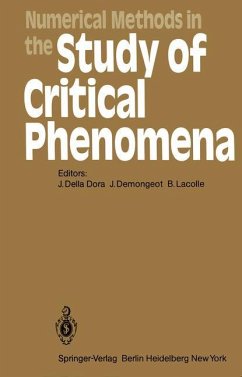
Dynamics of Hierarchical Systems
An Evolutionary Approach
Versandkostenfrei!
Versandfertig in 1-2 Wochen
39,99 €
inkl. MwSt.

PAYBACK Punkte
20 °P sammeln!
The main aim of these lectures is to tri gger the interest of the restless under graduate student of physical, mathematical, engineering, or biological sciences in the new and exciting multidisciplinary area of the evolution of "large-scale" dynamical systems. This text grew out of a synthesis of rather heterogeneous mate rial that I presented on various occasions and in different contexts. For example, from lectures given since 1972 to first- and final-year undergraduate and first year graduate students at the School of Engineering of the University of Patras and from informal seminars offere...
The main aim of these lectures is to tri gger the interest of the restless under graduate student of physical, mathematical, engineering, or biological sciences in the new and exciting multidisciplinary area of the evolution of "large-scale" dynamical systems. This text grew out of a synthesis of rather heterogeneous mate rial that I presented on various occasions and in different contexts. For example, from lectures given since 1972 to first- and final-year undergraduate and first year graduate students at the School of Engineering of the University of Patras and from informal seminars offered to an international group of graduate and post doctoral students and faculty members at the University of Stuttgart in the aca demic year 1982-1983. Those who search for rigor or even formality in this book are bound to be rather disappointed. My intention is to start from "scratch" if possible, keeping the rea soning heuristic and tied as closely as possible to physical intuition; I assume as prerequisites just basic knowledge of (classical) physics (at the level of the Berkeley series or the Feynman lectures), calculus, and some elements of probabil ity theory. This does not mean that I intended to write an easy book, but rather to eliminate any difficulty for an eager reader who, in spite of incomplete for malistic training, would like to become acquainted with the physical ideas and con cepts underlying the evolution and dynamics of complex systems.














